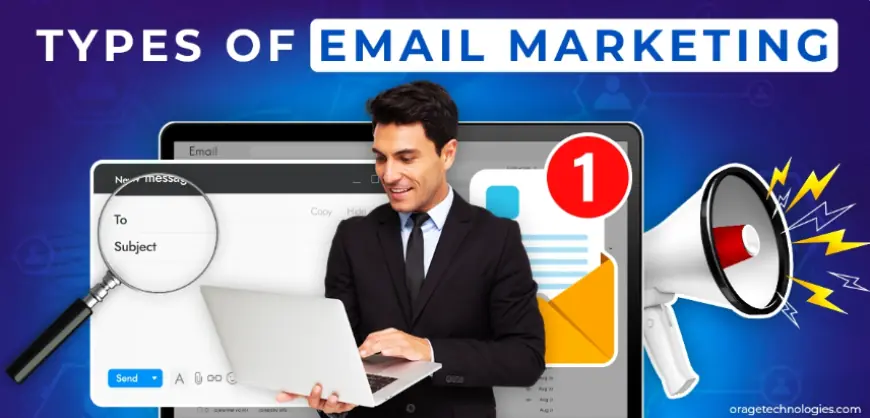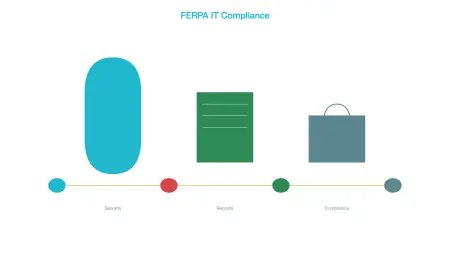Maximizing Email Marketing ROI: A Comprehensive Guide
Discover the types of email marketing in this complete guide. Learn how promotional, welcome, newsletter, and drip campaigns can boost engagement and sales.

Email marketing remains one of the most affordable ways for companies to reach customers with an estimated return on investment (ROI) of $42 for every $1 spent. The ability to connect directly with an audience to convert them is imperative and extremely powerful. But how can you ensure that you email marketing will bring you maximum returns? This guide provides empirically supported strategies for maximizing email marketing ROI and systematic, key questions to help improve your campaigns. Let's start exploring recommendations to make your email marketing more profitable and impactful.
Why Do Clear Goals Matter for Email Marketing ROI?
Clear goals will create clear direction for your email marketing campaigns, and make sure every marketing dollar is spent aligned to the business objectives. Whether your aim was to increase sales or website traffic, or customer retention from existing buyers, setting a specific and measurable goal will help guide your efforts. For instance, "I will implement a recession-proof email marketing campaign to increase product purchases by 15%.”
To set SMART goals: Specific, Measurable, Achievable, Relevant, and Time-bound. When you create your emails, use an active voice, like, "Drive more sales today!", which aligns with what you want to achieve. Start with the question, "What do we want this campaign to achieve?" and use that to guide your planning efforts and email marketing ROI for the campaign.
How Does Audience Segmentation Increase Returns?
Segmentation creates targeted groups within your email list based on factors like demographics, purchase behavior, or engagement levels. When you send relevant content to specific segments, your open rates, click-through rates, and conversions will increase, and these metrics will have a direct impact on your ROI. An example from a bookstore could be sending mystery novel promotions to those customers on their list whom had previously viewed or purchased a thriller novel. You are now sending relevant content to the person that has purchased similar content from you in the past.
To segment a customer list, the best place to begin is by using customer data through your email marketing platform. You can use customer behavior that you see, to create segmentation points. This may include segmenting frequent buyers, and those who have not engaged at all (inactive subscribers). You can also use personalized content with active calls to action such as "What will be your next read?" When you ask, "Who are we targeting with this email?" there is opportunity for more resonant message delivery which encourages returns.
In what ways does Audience Segmentation, drive ROI?
Segmentation allows you to create groups in your email list based on various factors, such as demographics, behavior on past purchases, and level of engagement with the bookstore. When you can deliver relevant content to audiences being tracked through their segments, your open rates, click rates, and conversions will improve and therefore, improve your ROI. An example of this from the bookstore, would be if you sent promotions about mystery novels to the last customers on your email list who had viewed or purchased a thriller novel.
You are now sending relevant content to the person that purchased similar content from you in the past.
If you want to start segmenting your customer list, you might as well start by utilizing the customer data from your email marketing platform. You can even utilize customer behaviors you see to create the segmentation points. For example, you might segment frequent purchasers, and inactive subscribers, so you can then create your emails with either of those groups in mind. You can also think about personalizing content with active calls to action: "What will be your next read?... " and also think about when you ask yourself, "Who is the target audience for this email?" when you have done the first two steps you might be able to serve a more resonant message, and this would support a return.
What Makes Personalization a Game-Changer for ROI?
Personalization is proactive. Personalizing the emails clearly shows that you know consumer preferences, making those emails both attention grabbing, and useful. Personalized emails can provide up to 6 times more transaction rates than generic emails. For example, when the recipient's name is inserted into the subject line, or where the email recommends products based on past purchases, creates a hyperlink compared to a generic model for others.
To achieve personalization, use your data from your CRM or email platform. Means of personalization includes the usage of dynamic content such as personalized offers or deals based on location, and an active CTA such as "Claim your exclusive discount!" As you create your targeted messages, ask yourself "How can we make this email feel personal?" Your personalized messages will drive higher engagement and should drive conversion, while improving ROI.
How Can You Tailor Email content for Better Engagement?
Good content engages subscribers and helps them be more likely to act, ultimately leading to better ROI. Whether a promotion, newsletter, or educational communication, your content should provide some value in relation to your audience's needs. More particularly, a tech company might share a tutorial on using its software, supporting a narrative (that you are helping your audience).
When it comes to crafting content, base it on clarity and relevance to your audience. Use the active voice like this "Find out what's new with our latest features now!" Use images or other visual elements to help make your emails more engaging. Keep content succinct and scannable. Be sure to ask yourself, "What value am I providing with this email?" This should guarantee your content is encouraging engagement and working towards ROI.
What Is A/B Testing and What to the Maximizing of the Return is?
A/B testing pits two email versions against each other to see which one comes out on top. This enables you to optimize a number of different variables (e.g., subject lines, calls to action, design) A good example is whether "Save 20% Today!" performs better than "Exclusive Offer Awaits!" Email testing allows you to refine your audience's experience which gives you more engaged audience members that are more willing to buy - maximizing ROI.
When conducting A/B tests you should always isolate a single variable that you will be testing and then randomly split your audience. You will then want to analyze the relevant metrics (e.g., open rates or conversions) to see which one won. In the case of general email campaigns, unless you have a spectacular piece, I favor using an active voice in your emails (i.e. "Shop now!"), so that you don't lose momentum. Then ask yourself, "What can we test to improve performance?" then repeat.
What is the Impact of Timing on the ROI of Email Marketing?
Sending emails at the right time creates a greater chance for opens and clicks, impacting ROI. While optimal timing can vary by audience, data backs midweek, morning sends (Tuesday or Wednesday, 9-11 AM)—which typically speak high engagement. (As memo: B2C might find even better results on weekends, when the consumer is more relaxed)
When thinking about timing, leverage email platform analytics to dig into your audience behavior. Test different send times, and measure clicks and opens. Send emails with active prompts, such as "Don't miss this deal!" Asking the question "When are our subscribers most active?" helps you to consider timing your emails with the most impact, respectively.
What Importance Does Mobile Optimization Have for ROI?
More than 50% of emails are opened on mobile, so optimizing your emails can have a huge impact on ROI. If your readers see a poorly optimized email, it will make for a poor user experience, and frustrate your audience.
A poorly formatted email may cause readers to unsubscribe or skip through everything, which will eliminate revenue and profit potential.
To optimize for mobile, use responsive templates, which will change based on screen sizes. Keep the email short and sweet. Be sure to use large text sizes, and make CTA buttons tappable, like “Get Started Now!" Make sure to test emails on different devices to see how well they perform. If an email is more difficult to read on a phone, simply ask, "is this email easy to read on a phone?" The more you deliver seamless experiences, the more likely you are to drive conversions and improve your ROI.
How can you save time and boost your return by using automation?
Automation is a powerful tool in reducing workload in email marketing by making it easier for you to send timely and relevant messages without worrying about filing time to push the button. You can set up automated workflows, like a welcome series or abandoned cart emails, and trigger them to send when a user takes an action, so you keep the conversation going. For an e-commerce store, an automated reminder may lead to the recovery of 15% of abandoned carts, thus achieving better ROI.
You will want to use a platform that has features that allow automation. Once that is done, you can outline customer journeys and set triggered events when someone makes a purchase or signs-up. You also want to develop calls to actions to encourage users to complete something, using active voice, such as “Complete your order now!”. Asking “How does automation help with efficiency?” lets your campaigns scale while maximizing your return.
The Importance of Monitoring and Cleaning Your Email List
You want a healthy email list for good deliverability and engagement, which are both vital to your ROI. However, inactive subscribers or invalid emails can hurt your sender reputation and lessen the chance of your emails landing in inboxes. Regularly cleaning your email list—removing people that have not engaged with your brand—will help you keep your emails effective.
You can maintain your list health by running re-engagement campaigns with offers like "please come back we will give you 10% off!" You will want to remove any hard bounces immediately and keep track of engagement metrics regularly. You may also want to use have your new subscribers double opt-in. You want to ask yourself "Is our list reaching engaged subscribers?" You want to optimize your deliverability and drive higher ROI.
How can compliance and trust influence long-term ROI?
When you comply with regulations like CAN-SPAM or GDPR, you build trust and protect your brand, resulting in long-term ROI. It is important to understand that these laws require companies to provide specific information: opt-in consent for emails, easy-access opt-out and unsubscribe options, and correct sender information. Furthermore, it is important to understand that when companies violate these laws, they can receive fines and more.
Compliance is achieved by using a reputable email platform, including the required elements that will keep you connected to your subscribers along the way, and honoring unsubscribe requests. It's also about establishing trust with the subscribers who give you permission to email them, including using transparent and honest data practices. You can ask yourself questions like, "Are we building trust with our subscribers?" When you ask this question, you will ultimately align the rest of your campaign to identify whether you can create deeper connections that convert a one-time buyer into a loyal customer, with the potential long-term ROI.
Frequently Asked Questions About Email Marketing ROI
How quickly can I see ROI from email marketing?
ROI varies, but well-executed campaigns can show results within weeks. Focus on segmentation and personalization to accelerate returns.
What’s the biggest mistake that hurts email marketing ROI?
Sending generic, irrelevant emails can lead to low engagement and unsubscribes. Always tailor content to your audience’s needs.
How do I measure email marketing ROI?
Calculate ROI by dividing the revenue generated by the campaign cost. Track metrics like conversions and sales to assess impact.
Can small businesses achieve high ROI with email marketing?
Yes! Email marketing is scalable and budget-friendly, allowing small businesses to achieve strong returns with targeted campaigns.
Conclusion
Maximizing email marketing ROI requires a strategic blend of clear goals, targeted content, and data-driven optimization. By segmenting your audience, personalizing emails, and leveraging automation, you create campaigns that engage and convert. Optimize for mobile, test relentlessly, and maintain a healthy list to ensure long-term success. Start applying these strategies today to transform your email marketing into a high-ROI powerhouse that drives measurable results.
What's Your Reaction?
 Like
0
Like
0
 Dislike
0
Dislike
0
 Love
0
Love
0
 Funny
0
Funny
0
 Angry
0
Angry
0
 Sad
0
Sad
0
 Wow
0
Wow
0




















































